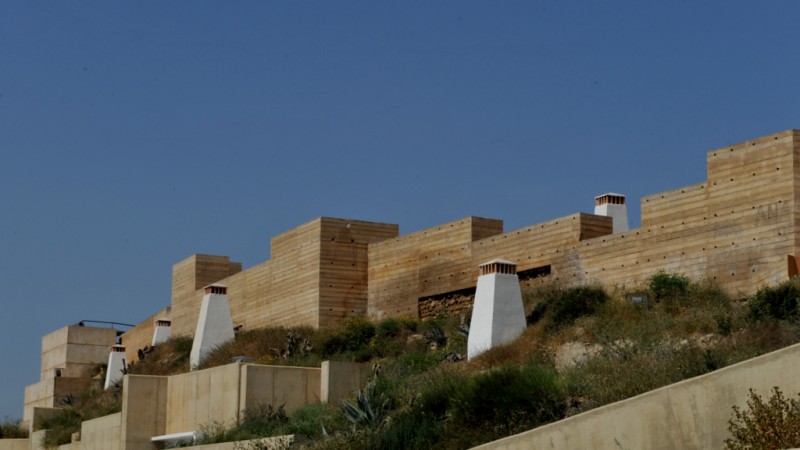

Guidelines for submitting articles to Mazarron Murcia
Hello, and thank you for choosing Mazarron Murcia to publicise your organisation’s info or event.
Mazarron Murcia is a website set up by Murcia Today specifically for residents of the urbanisation in Southwest Murcia, providing news and information on what’s happening in the local area, which is the largest English-speaking expat area in the Region of Murcia.
When submitting text to be included on Mazarron Murcia, please abide by the following guidelines so we can upload your article as swiftly as possible:
Send an email to editor@spaintodayonline.com or contact@murciatoday.com
Attach the information in a Word Document or Google Doc
Include all relevant points, including:
Who is the organisation running the event?
Where is it happening?
When?
How much does it cost?
Is it necessary to book beforehand, or can people just show up on the day?
…but try not to exceed 300 words
Also attach a photo to illustrate your article, no more than 100kb

What to see in Puerto Lumbreras
What to visit and what to buy when visiting Puerto Lumbreras
The municipality of Puerto Lumbreras lies in the south-west of the Region of Murcia and features a landscape which alternates between mountains such as the Cabezo de la Jara (1,242 metres above sea level) and the fertile lowlands of the Guadalentín valley, where leaf vegetables and flowers are among the crops grown.
Puerto Lumbreras lies on the border with the Almería province of Andalucía and has been a principal stop-off point for those travelling between Andalucía and the Murcia region for centuries.
Surrounded by fertile agricultural plains, the municipality is principally agricultural in its economic activity, but includes some interesting options for those visiting for tourism purposes.
Information about accommodation, refreshments and rural accommodation, as well as printed leaflets about the area can be found in the tourist office which is located at the principal entrance to the town from the main Autovía and is set in a pleasant parking area which is easy to access.
Click for map and further information about the Tourist Information Office in Puerto Lumbreras.
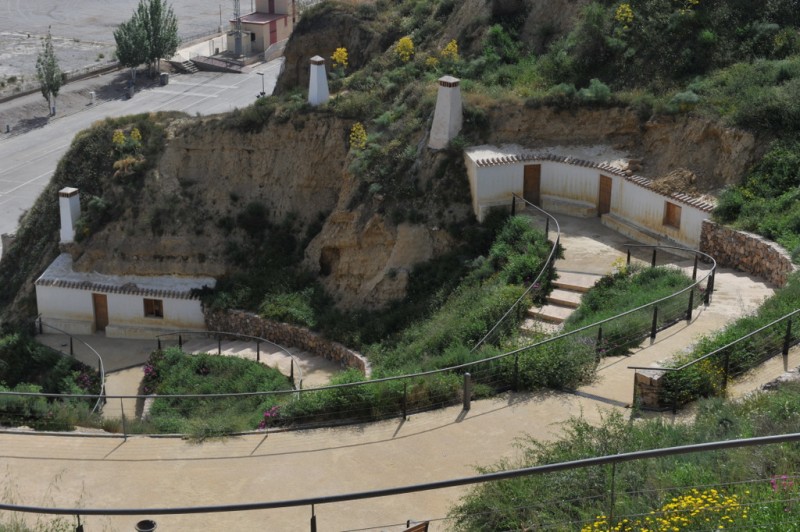
What to visit
There are two principal attractions in Puerto Lumbreras: the Medina Nogalte complex which comprises the reconstituted fortress and a series of cave houses which have been restored and furnished with a series of exhibits about the history of the town, the castle, its traditions and way of life, as well as its dependence on the natural water systems which form a part of its geographical make-up; and the astronomical observatory in the countryside of Cabezo de la Jara.
Both of these are distinctively unique and offer good reasons to visit the municipality at different times of the day!
Groups planning a trip to Puerto Lumbreras can also consider adding in other locations to form a themed route, although these are not normally open as attractions in their own right, or easy to visit without a guide.

A morning out for a group visiting Puerto Lumbreras by prior arrangement with the tourist office:
La Casa del Cura: a good starting point to learn about the water systems which define the identity of Puerto Lumbreras, visiting the interpretation centre and hydraulic exhibits at the centre. Click Casa del Cura.
Visit to the Augusto Vels graphology museum and the Casa de los Duendes; from here, it is easy to walk down to the parish church of Nuestra Señora del Rosario and stop off in the Pastelería next to the church to buy some local pastries, before walking down to the rambla to see the most important hydraulic structure in the municipality.
From here, the tour will drive on up to see the Medina Nogalte fortress and cave house complex, which requires roughly one and a half hours to enjoy fully as the cave houses each contain separate exhibits.
In the evening a visit could be made to the cave houses and castle complex as dusk falls, before continuing out to the observatory for a spot of star watching.
Visiting independently
The main location to visit is the Medina Nogalte complex, which can be walked without the need for a guide and at your own leisure as the display boards are in English.
The castle complex is only open at weekends for much of the year, namely Friday, Saturday and Sunday and during the hottest months of the year is only open in the evenings. This is in fact highly practical, given that the fortress is fully open to the elements and becomes extremely hot during the summer. The complex is atmospherically lit at night and is entertaining to visit during the cool of the evening.
This does, however, mean that the other locations of interest in the town are not open at the same time, and the views from the top of the castle less spectacular, but conversely, it also makes it easier to find a restaurant and refreshments in the town below after a visit.
From time to time there are guided or theatrical visits, which are posted in the What’s on section. Click for more information about Medina Nogalte and the Cave Houses.
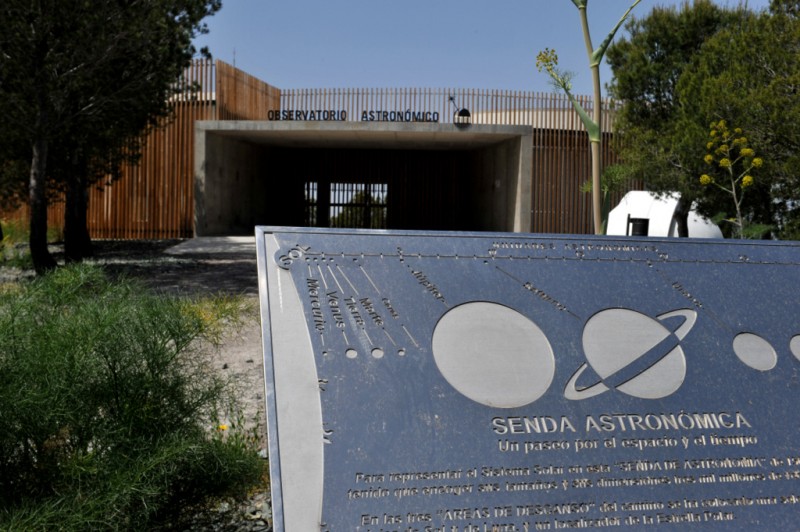
The astronomical observatory
This is located approximately seven kilometres from the town centre in the Cabezo de la Jara and is equipped with an LX 200 12 MEADE reflector telescope, and classroom facilities.
The observatory is open for visits in the evenings of Wednesday and Saturday between June 15 and September 15 and for the last Saturday of each month the remainder of the year. Visits must be pre-booked via the Tourist Office and cost 2.50 euros.
Alongside the observatory is a 1.2 km long astronomical walk which charts the movements of the planets and can be visited any time. There are periodical accompanied visits to the walk (known as the Sendero del Tiempo) which are posted in the What’s on section.
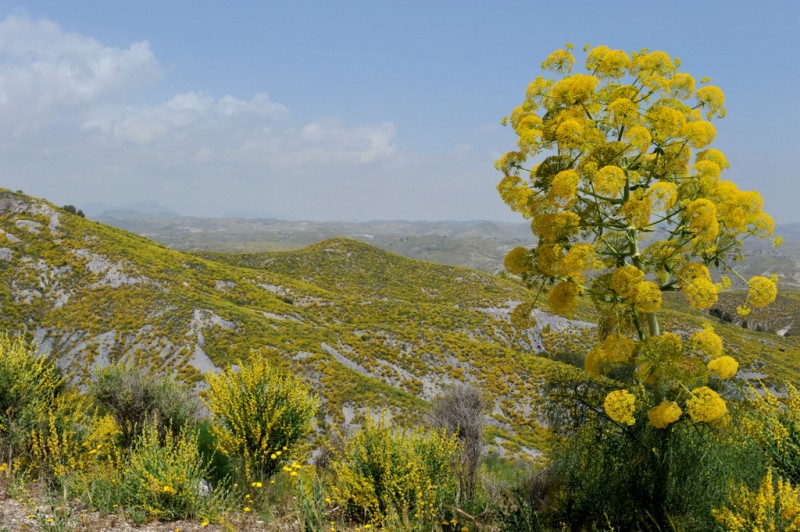
Senderismo
Rural tourism is popular in the municipality and there are a number of walking routes which can be enjoyed at leisure. The tourist office can supply information about rural accommodation in the area.
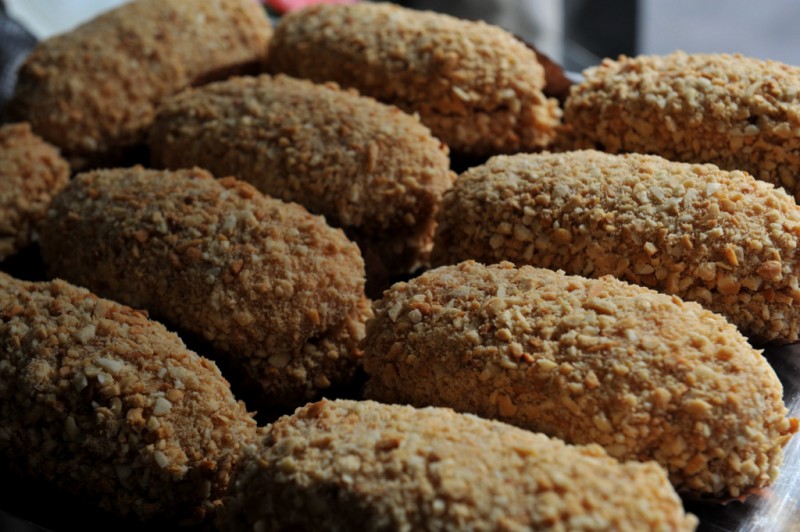
What to buy and what to try in Puerto Lumbreras
Although there are no longer ceramic manufacturers working in the municipality, Puerto Lumbreras still maintains strong links to the ceramic sector and the artisans in neighbouring Lorca, so remains a good place to shop for locally made ceramic products.
The gastronomy is very closely linked to the produce of the local agricultural sector and hostelries offering lunchtime menus will inevitably include guisos (stews) made with local pork and vegetables, migas (a calorific agricultural staple which involves frying flour and olive oil to make a crispy breadcrumb mixture served with “tropezones” which are pieces of fried meat, fish or vegetables), arroz, or rice which is served in a paella-style format with various meat, fish and vegetable variations, and carne “a la brasa” which has been seared over a hot fire or grill.
Desserts and pastries tend to include locally grown almonds as one of their core ingredients, and "Postre Chino" and "Albóndigas" are both popular Puerto Lumbreras dishes.
Click for more information about the Puerto Lumbreras municipality.






